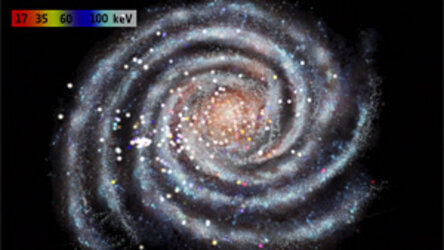Accept all cookies Accept only essential cookies See our Cookie Notice

About ESA
The European Space Agency (ESA) is Europe’s gateway to space. Its mission is to shape the development of Europe’s space capability and ensure that investment in space continues to deliver benefits to the citizens of Europe and the world.
Highlights
ESA - United space in Europe
This is ESA ESA facts Member States & Cooperating States Funding Director General Top management For Member State Delegations European vision European Space Policy ESA & EU Space Councils Responsibility & Sustainability Annual Report Calendar of meetings Corporate newsEstablishments & sites
ESA Headquarters ESA ESTEC ESA ESOC ESA ESRIN ESA EAC ESA ESAC Europe's Spaceport ESA ESEC ESA ECSAT Brussels Office Washington OfficeWorking with ESA
Business with ESA ESA Commercialisation Gateway Law at ESA Careers Cyber resilience at ESA IT at ESA Newsroom Partnerships Merchandising Licence Education Open Space Innovation Platform Integrity and Reporting Administrative Tribunal Health and SafetyMore about ESA
History ESA Historical Archives Exhibitions Publications Art & Culture ESA Merchandise Kids Diversity ESA Brand Centre ESA ChampionsLatest
Space in Member States
Find out more about space activities in our 23 Member States, and understand how ESA works together with their national agencies, institutions and organisations.
Science & Exploration
Exploring our Solar System and unlocking the secrets of the Universe
Go to topicAstronauts
Missions
Juice Euclid Webb Solar Orbiter BepiColombo Gaia ExoMars Cheops Exoplanet missions More missionsActivities
International Space Station Orion service module Gateway Concordia Caves & Pangaea BenefitsLatest
Space Safety
Protecting life and infrastructure on Earth and in orbit
Go to topicAsteroids
Asteroids and Planetary Defence Asteroid danger explained Flyeye telescope: asteroid detection Hera mission: asteroid deflection Near-Earth Object Coordination CentreSpace junk
About space debris Space debris by the numbers Space Environment Report In space refuelling, refurbishing and removingSafety from space
Clean Space ecodesign Zero Debris Technologies Space for Earth Supporting Sustainable DevelopmentLatest
Applications
Using space to benefit citizens and meet future challenges on Earth
Go to topicObserving the Earth
Observing the Earth Future EO Copernicus Meteorology Space for our climate Satellite missionsCommercialisation
ESA Commercialisation Gateway Open Space Innovation Platform Business Incubation ESA Space SolutionsLatest
Enabling & Support
Making space accessible and developing the technologies for the future
Go to topicBuilding missions
Space Engineering and Technology Test centre Laboratories Concurrent Design Facility Preparing for the future Shaping the Future Discovery and Preparation Advanced Concepts TeamSpace transportation
Space Transportation Ariane Vega Space Rider Future space transportation Boost! Europe's Spaceport Launches from Europe's Spaceport from 2012Latest

Integral sees a ‘quiet’ Galactic Centre
Thank you for liking
You have already liked this page, you can only like it once!
This mosaic image, built with exposures obtained by the IBIS/ISGRI instrument on board ESA’s Integral gamma-ray observatory in April 2006, shows the Galactic centre region, an area of the sky supposed to host a gigantic black hole and characterised by the presence of a variety of hard X-ray and gamma-ray point sources. Due to the variability these sources possess on all time scales, the region never looks exactly the same.
Surprisingly, the sources were ‘off’ around the time of the observation (including the normally bright well-known black-hole candidate and micro-quasar 1E 1740.7-2942), displaying an unusually ‘quiet’ galactic centre. This is a very different view from those obtained on the long-term average.
The sources and the positions marked in white are almost permanently visible, while those marked in red are known ‘transient’ sources, that is sources more often ‘off’ than ‘on’.
The source called 1E 1740.7-2942 is normally the brightest source in the Galactic Centre region. It is a well-known black-hole candidate, as well as a micro-quasar source. The massive black hole at the very centre of our Galaxy, Sagittarius A* (or Sgr A*), is very close to source marked as ‘1’, corresponding to IGR J17456-2901.
The image covers a sky area of 4.3x2 degrees, and it is centred on (0, -0.5) degrees in Galactic coordinates.
-
CREDIT
ESA/ISDC -
LICENCE
ESA Standard Licence

Galactic Centre through Integral’s eyes

Integral's black hole census

Hidden black holes in the local universe

Galactic centre















 Germany
Germany
 Austria
Austria
 Belgium
Belgium
 Denmark
Denmark
 Spain
Spain
 Estonia
Estonia
 Finland
Finland
 France
France
 Greece
Greece
 Hungary
Hungary
 Ireland
Ireland
 Italy
Italy
 Luxembourg
Luxembourg
 Norway
Norway
 The Netherlands
The Netherlands
 Poland
Poland
 Portugal
Portugal
 Czechia
Czechia
 Romania
Romania
 United Kingdom
United Kingdom
 Slovenia
Slovenia
 Sweden
Sweden
 Switzerland
Switzerland
























